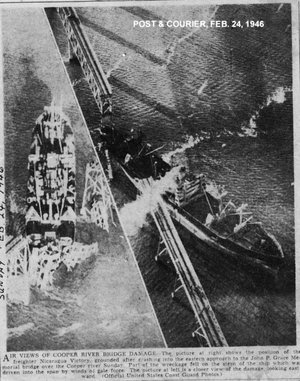The Bridge Blog
A dialog about our new bridge and these web pages
Overview. As a pointy-headed
university professor, my weekend project of bridge photography and
building these web pages generated many questions and introduced me
to just-in-time learning. I enjoy chasing my curiosity and
want to identify ways to encourage younger learners to also enjoy curiosity
chasing and learning.
Learning usually requires repetition while forgetting occurs when
I infrequently use information. Many young learners do not understand
the importance of repetition. Weekly visits to the bridge provided
the repetition necessary to detect changes in the bridge and
consequently generated
many questions and opportunities for learning. Over the course of the
bridge project, I had access to few experts for answering questions.
Rather than a liability, this became an asset and pushed me to improve
my search skills with Google. Soon, I found that answers
to questions encountered during my weekly photo shoots were often
only a Google-search away -
(see
Restoring the Joy in Learning). Consequently Google + Internet became
dependable extensions of my memory.
The bridge story is a work in progress and is evolving from a simple
collections of photographs to an experiment with Internet-centric
just-in-time learning.
Insights I gain from you
will find their way into the learning centers of MUSC.
Palmetto Bridge Constructors, a joint venture between
Tidewater
Skanska and
Flatiron Constructors, as well as
High Steel Structures,
Freyssinet, the
SCDOT and the
Federal Highway Commission Office
of Bridge Technology guided much of my learning.
I also learn from many of you and from Google-linked resources. More
important is the e-mail encouragement I receive from many of you.
Wed, 13 Apr 2005
April 13, 2005: A bit of history
 John Baxley, an aerial photographer from Springfield, SC, has found
a bit of Cooper River Bridge history.
Almost every visit I make to the new bridge
coincides with a cargo ship or tanker sliding along the Cooper River and
under the bridge. During the transition from a web site for my grandchildren
to what it is today, I remember reading some discussion
about the islands that were built at the base of the east and west pylons.
Specifically, these islands were designed to be sufficiently large in diameter
to prevent a ship from colliding with the pylon.
John Baxley, an aerial photographer from Springfield, SC, has found
a bit of Cooper River Bridge history.
Almost every visit I make to the new bridge
coincides with a cargo ship or tanker sliding along the Cooper River and
under the bridge. During the transition from a web site for my grandchildren
to what it is today, I remember reading some discussion
about the islands that were built at the base of the east and west pylons.
Specifically, these islands were designed to be sufficiently large in diameter
to prevent a ship from colliding with the pylon.
As a relatively newcomer to Charleston (we moved from Chapel Hill in 1998),
I am not aware of much of the history and stories surrounding the older
members of the Cooper River Bridge family. Many of you have told me
stories of family experiences with the bridge that bring a personal touch
to my understanding. However, thinking about the earlier lives of the
Cooper River Bridges never clicked
until John sent me this photo of a collision
in 1946. Clearly, historical information is as important to our web project
as today's images. Another nice contribution to our project. Thanks, John.
And a P.S. Tim Linder frequently contributes to our project and dramatically
improved the quality of the original image. Thanks to you also, Tim.
Another P.S. - Jim Bogle from Columbia remembers the story of the
collision of the Nicaragua Victory and the Grace Bridge as told by
his parents. According to him, the Army rigged a Bailey Bridge until repairs
could be done. The opportunities for walking across the Grace Bridge
as I build the story of the
Unbuilding of the Grace and Pearman Bridges are rapidly disappearing. With
input from Jim and John - I shall be much more attentive to the Grace
structure and see if there are any residual signs of the collision.
posted at: 11:24 | path: | permanent link to this entry